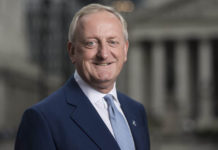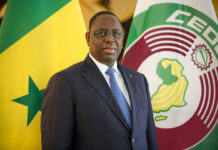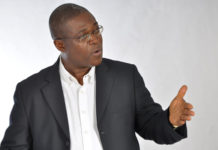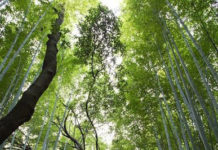Senegal aims to obtain sufficient energy sources while reaching a triple objective that includes providing reliable electricity for its citizens
DAKAR, Senegal, August 2, 2019/APO Group/ —
Africa is leading the liquefied natural gas (LNG) global race as it will receive one-third of total global greenfield investments for LNG projects in 2019, around $103 billion. Senegal is leading the way with its giant Grand Tortue Ahmeyim (GTA) gas field, which will have economic and social benefits in the long-term. Gas-to-power is now a key pillar of the country’s strategy to provide universal power access to its people and increase economic competitiveness.
Natural gas in the GTA was first encountered in 2014 by frontier explorer Kosmos Energy, who later entered into a joint-operating venture with British supermajor BP. Successive discoveries since then have indicated that the field could produce up to 10 million tons of LNG per year. Beyond sizeable reserves, the project is unique in many senses as it allowed a landmark transborder cooperation agreement to be signed between Mauritania and Senegal. The GTA project will be known as the fastest LNG project ever, with just five to six years between discovery and first gas, which is scheduled for 2022.

As part of the country’s Emerging Senegal Plan (PSE), launched by H.E President Macky Sall in 2014, Senegal aims to obtain sufficient energy sources while reaching a triple objective that includes providing reliable electricity for its citizens with the goal of reaching universal access by 2025; increase its competitiveness by supplying affordable power to local companies and protecting the environment with cleaner energy.
During a meeting with Africa Oil & Power in December last year, Philippe Miquel, Head of Western and Central Africa for French renewable energy firm Engie, stated: “I believe it is a good thing for Senegal to develop its natural gas resources. For one, it will decrease the use of fuel-based plants for a cleaner environment. Senegal will also be able to think about other uses for natural gas besides power generation including natural gas distribution for the retail market and natural gas as a transportation fuel.”
Since the GTA discovery, gas-to-power has become an increasingly hot topic in Senegal and is now a key component to becoming a regional energy hub and an energy-independent nation.
Serigne Mboup, Managing Director of Société Africaine de Raffinage (SAR), Africa’s oldest hydrocarbon refinery, told Africa Oil & Power: “The government of Senegal has expressed its wish to make our country the energy hub of West Africa. This strategy is in line with the global push towards greener energy production which SAR intends to fully comply with.”
In order to implement its gas-to-power masterplan, the Senegalese government is working closely with an integrated team comprising UK-based Penspen and MJMEnergy. Penspen will be in charge of studying technical aspects of the project including multiple scenarios to connect final consumers with new gas supplies. It will also put together a conceptual gas network infrastructure design associated with an estimation of costs and timeline. MJMEnergy will define the economics of the projects, including gas markets and financial related aspects. It will also develop the institutional framework and business requirements of the new public-private enterprise that will build and manage the gas network.
“We are pleased to be contributing to the development of Senegal’s domestic gas sector. This important project is a significant milestone for the country in providing access to competitive and clean supplies of energy to its people. We look forward to using our deep technical experience to help Senegal maximise the benefit from the natural gas it has discovered within its territorial waters,” Penspen CEO, Peter O’Sullivan, said.
Production Areas
Senegal currently produces gas from the Gadiaga onshore field, most of which is consumed by large corporations such as cement producers. Two fields are expected to come into production by 2022; Sangomar, offshore Dakar and the GTA.
The government of Senegal has expressed its wish to make our country the energy hub of West Africa
Sangomar is expected to produce gas solely for national utility company SENELEC, at a rate of between 60 and 100 million cubic feet per day (mmscfd), enough to supply a 350 to 590 megawatt (MW) plant.
The GTA, located offshore Saint-Louis straddling the Senegal-Mauritania border, is expected to contain between 15 and 50 trillion cubic feet of natural gas. The development plan for this field states that 35 mmscfd of natural gas will supply both countries upon first production, sufficient for the needs of a 250MW power plant in Senegal and in Mauritania.
First estimations from SENELEC state the purchase price of natural gas will be around $5-6 metric million British thermal units (MMBTU), thus lowering the price of electricity in Senegal by up to 50 percent.
Gas-to-Power Infrastructure
The transportation network will be split into three; the North network, South Network, and Dakar network. With a total length reaching 427Km, the project cost is estimated at around $300 million and will be built in various phases.
The North segment will include a short line from the GTA to a power plant near Saint-Louis, which will then be extended by 140Km to the Tobene Power plant onshore. This segment is aimed to be finalized by 2024.
The South network will link the Dakar network to the Kahone power plant by 2023. It includes a 120Km pipeline.
Finally, the Dakar network is the infrastructure centrepiece, aimed to be commissioned in 2023. It will connect the Sangomar gas producing field to several existing power plants around Dakar, achieving a total length of 157Km.
Electricity Production
In order to generate enough power to meet national goals, Senegal is moving forward with a dual strategy regarding its power plants. A number of existing power plants will be converted into dual-fuel power plants while brand new combined cycle power plants will be commissioned by 2022-2023.
According to a study run by Sweden-based Wärtsilä, $61 million is necessary for conversion operations. Discussions are currently ongoing with the World Bank regarding funding for this particular project. Mostly located around Dakar, these power plants could be fed by Sangomar gas as early as 2023.
Wärtsilä was awarded the contract for the construction of a 130MW Flexicycle power plant last year, in line with Senegal’s strategy to have flexible power plants ready to incorporate natural gas as feedstock.
“This is a major energy project that is very important for Senegal. We needed a reliable and qualified partner to engineer and provide the flexible and reliable energy system, now and as our energy infrastructure evolves. With its global and Pan-African experience, Wärtsilä fully meets the project requirements,” commented Sami Soughayar, CEO, Matelec Group.
Under the leadership of H.E President Macky Sall, Senegal boasts tremendous growth figures, around seven percent annually. The trend is not looking to weaken, with the country positioned by the CIA’s World Factbook at number 12 in the world’s fastest-growing economies by 2023. Such figures, coupled with massive hydrocarbon discoveries, have made Senegal a top investment destination globally. Despite tremendous economic opportunities, the Senegalese government never ceases to show its commitment to its people. Major projects are underway to increase rural inclusion and reduce unemployment. In the energy sector, President Sall, who will be designated Africa Oil Man of the Year at Africa Oil & Power, taking place in Cape Town on October 9-11, has put together a strong institutional and regulatory framework in order for the country’s natural resources to benefit the people.
Distributed by APO Group on behalf of Africa Oil & Power Conference.















